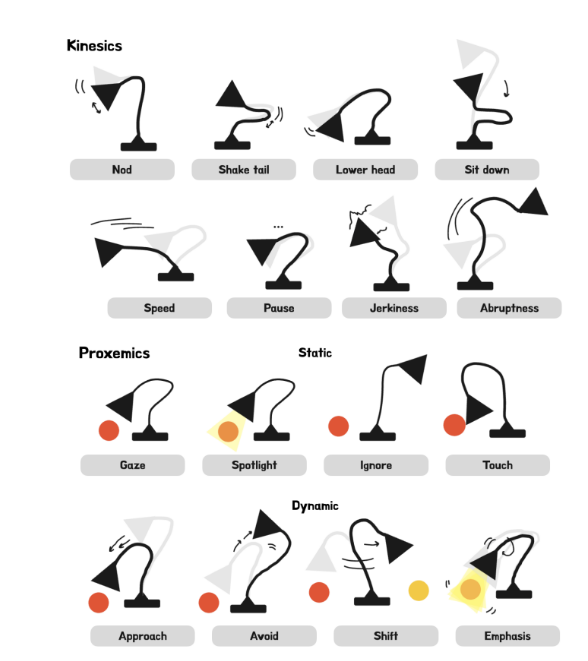A recent study released by Apple shows that the company is developing a new framework called ELEGNT, aimed at enabling non-humanoid robots to exhibit more natural and expressive movements, which could pave the way for the future development of household robots.
The research team used a robot resembling the lamp character from the Pixar animation "Luxo Jr." as a prototype, equipped with a 6-axis robotic arm and a head featuring lighting and projection capabilities. Through the ELEGNT framework, researchers enabled the robot not only to perform functional tasks but also to convey intentions, emotions, and attitudes through its movements.

The visual guide showcases the expressive movement vocabulary developed for the lamp-like robot, including basic gestures and spatial behaviors. (Source: Apple)
In tests involving 21 participants, expressive movements significantly enhanced user engagement with the robot, especially during social tasks such as playing music or having conversations. However, the study also found that older adults showed lower acceptance of expressive robotic movements, indicating that future robotic behaviors may need to be customized based on user preferences.

This robot has a wide range of functions, from providing practical tasks like reading lights to offering creative suggestions and playful companionship for social interaction. (Image source: Apple)
Apple researchers noted that robot design is undergoing a fundamental shift. The future focus will not only be on enabling robots to complete tasks but also on how to integrate them naturally into human living spaces. This suggests that the development of robots may require collaboration between animators and behavioral psychologists.
This research will be presented at the Design Interaction Systems Conference in Madeira in July 2025. As household robots become increasingly prevalent, finding a balance between functionality and expressiveness will be a key factor in determining their success.










